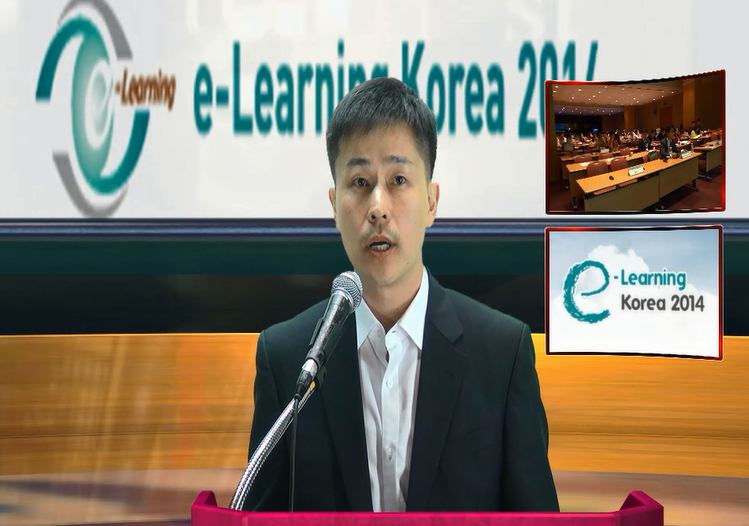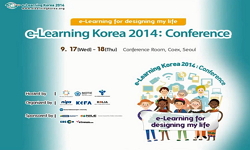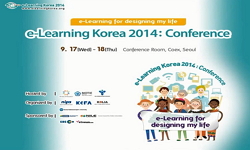상담은 어떻게 치료적 변화를 일으키는가? 이 질문은 정신분석 역사에서 중심적인 질문인 동시에 논쟁의 대상이 되어온 질문이다. 이에 대한 학자들의 답변들은 정신분석이 상담관계에서 ...
http://chineseinput.net/에서 pinyin(병음)방식으로 중국어를 변환할 수 있습니다.
변환된 중국어를 복사하여 사용하시면 됩니다.
- 中文 을 입력하시려면 zhongwen을 입력하시고 space를누르시면됩니다.
- 北京 을 입력하시려면 beijing을 입력하시고 space를 누르시면 됩니다.

정신분석적 관점에서 본 문학치료의 효용 = The Effectiveness of Literary Therapeutics based on the Psychoanalytic Perspective
한글로보기https://www.riss.kr/link?id=A103237761
- 저자
- 발행기관
- 학술지명
- 권호사항
-
발행연도
2016
-
작성언어
Korean
- 주제어
-
등재정보
KCI등재
-
자료형태
학술저널
- 발행기관 URL
-
수록면
9-37(29쪽)
-
KCI 피인용횟수
6
- DOI식별코드
- 제공처
-
0
상세조회 -
0
다운로드
부가정보
국문 초록 (Abstract)
상담은 어떻게 치료적 변화를 일으키는가? 이 질문은 정신분석 역사에서 중심적인 질문인 동시에 논쟁의 대상이 되어온 질문이다. 이에 대한 학자들의 답변들은 정신분석이 상담관계에서 치료적 변화를 찾는다는 점에서 공통점을 보인다. 프로이트는 환자가 중요한 대상과의 초기 관계양상을 상담관계에 재연한다는 것을 발견했고 이를 전이라고 개념화시켰다. 그는 바로 이 전이의 적절한 해석이 치료적 변화를 가져온다고 주장했다. 반면, 코헛과 같이 분석가의 공감적 태도를 강조한 학자들은 전이를 통해 환자들은 새로운 발달적 성취를 기대하는 것이기에 분석가가 공감적으로 이 기대를 만족시켜줄 수 있어야 치료적 변화가 일어난다고 보았다. 이런 정신분석적 모델들은 분석가가 가진 주관적 독특성이나 정신세계에 대한 고려가 없다. 최근 발전된 정신분석학적 상호주관성 이론은 치료적 변화를 치료자와 환자가 함께 창조하는 전이와 역전이의 상호작용에서 찾는다. 다시 말해, 치료자와 환자의 정신세계가 조우하고 병합되는 과정에서 치료적 변화는 일어난다고 보았다.
본 논문의 목적은 이런 정신분석적 상호주관성 이론 관점에서 문학치료의 치료적 효용을 고찰하는 데 있다. 나아가 본 논문은 문학치료의 치료적 잠재능력이 극대화될 수 있는 문학치료적 성찰방법을 제안한다. 정신분석적 상호주관성 이론은 치료자의 주관적 경험내용이 불가피하게 상담관계에 영향을 끼칠 수밖에 없다고 주장한다. 환자는 치료자에 의해 영향 받지 않을 수 없으며, 동시에 치료자 또한 환자에 의해 영향 받지 않을 수 없다. 그렇기에 상호주관성 이론은 상담관계를 상호적으로 영향을 주고 받는 관계로 묘사하게 된다. 치료자의 내적 정신세계와 주관적 경험내용은 치료적인 과정에서 필수적인 역할을 하게 되며, 치료자 자신은 환자의 치료적 변화를 위한 중요한 도구로 인식된다. 그러므로 작품서사를 통한 자기서사의 변화와 수정을 목표로 하는 문학치료가 그 치료적 목표를 달성하기 위해서 문학치료자는 수동적 위치에 있어서는 안되며, 문학치료자의 역전이를 적극 활용하고 사용할 수 있어야 한다.
본 논문은, 문학치료자가 자신의 역전이를 사용할 수 있는 문학치료적 성찰방법을 제시한다. 그것은 세 단계로 나눠볼 수 있는데, 1) 다양한 작품서사에 대한 분석과 문학치료적 훈련을 거친 문학치료자가 특정한 내담자와의 관계에서 경험한 역전이를 성찰하는 단계, 2) 역전이를 통해 선택된 작품서사와 그 주제들과, 사례의 유사점을 조명하는 비판적 사고의 단계, 그리고 3) 선정된 작품서사를 치료적으로 사용하는 단계로 구성될 수 있다. 이런 문학치료적 성찰방법을 통해서 작품서사는 치료적 변화를 수반하는 공간인 상담자와 내담자에 의해 창조되는 상호주관적 영역으로 기능할 수 있게 된다. 이를 통해 작품서사는 내담자의 자기서사에 공명하고 그것을 변화시키는 치료적 자원으로 기능할 수 있게 된다.
다국어 초록 (Multilingual Abstract)
How does counseling cause a therapeutic change? This question has been the subject of controversy in psychoanalysis. However, every psychoanalytic tradition has focused on the counseling relationships as the source of the therapeutic change. Freud dis...
How does counseling cause a therapeutic change? This question has been the subject of controversy in psychoanalysis. However, every psychoanalytic tradition has focused on the counseling relationships as the source of the therapeutic change. Freud discovered that patients reenact an aspect of early relationship with important figures in the counseling relationship and he conceptualized this as transference. He asserted that a suitable interpretation of the transference causes the therapeutic change. However, Kohut contended that what patients want in the transference is to satisfy their own inner needs in the relationship with analysts. Therefore, he saw the empathetic attitude of analysts as the origin of the therapeutic change. The psychoanalytic models do not consider subjective experiences of analysts which play a central role in the recent psychoanalytic theory called the intersubjective theory. It asserts that the therapeutic change occurs in the transference and countertransference matrix co-created by analysts and patients. In other words, the mixing of minds in the matrix is the reason for the therapeutic change. The purpose of this paper is to investigate the effectiveness of literary therapeutics from the perspective of the psychoanalytic intersubjective theory. Through this argument, this paper suggests an introspective method of literary therapeutics to maximize efficiency of the therapeutic potential of its approach. The intersubjective theory realizes that therapists` subjective experiences inevitably influence the therapeutic relationship. Patients and therapists form mutually influencing relationships giving and taking influences from the other party. The internal object relationships and subjective experiences of therapists play a necessary role in the therapeutic process and therapists themselves are recognized as an important tool in the therapy. Therefore, literary therapists take advantage of their own countertransference to accomplish its therapeutic purpose of giving a strong influence to the epic of self through the epic of literature.
This paper presents an introspective method of literary therapeutics that makes it possible for the therapists of literary therapeutics to use their own countertransference. The method can be broken down into three steps: (1) the therapists who have gone through literary therapeutics training reflect on their own countertransference in the relationship with the patients; (2) they critically review literary works, their topics and their implications for a specific case; and (3) they use the selected literary works for therapy. This introspective method applies the epic of literary works to function as the intersubjective field involving the therapeutic change. This method also ensures the epic of literary works resonate with the epic of self as a therapeutic resource.
참고문헌 (Reference)
1 정운채, "자기서사의 변화 과정과 공감 및 감동의 원리로서의 서사의 공명" 한국문학치료학회 25 : 361-381, 2012
2 정운채, "문학치료와 자기서사의 성장" 우리말교육현장학회 4 (4): 7-54, 2010
3 Harris, Adrienne Harris, "the Textbook of Psychoanalysis" American Psychiatric Publishing 2005
4 Stolorow, Robert D., "Worlds of Experience" Basic Books 2002
5 Loewald, Hans, "Transference-countertransference" 34 : 1986
6 Grant, Jan, "Transference and Projection" Open University Press 2002
7 Freud, Sigmund, "The Standard Edition of the Complete Psychological Works of Sigmund Freud" The Hogarth Press 1955
8 Freud, Sigmund, "The Standard Edition of the Complete Psychological Works of Sigmund Freud" Hogarth Press 1958
9 Kohut, Heinz, "The Restoration of the Self" University of Chicago Press 1977
10 Katz, Gil, "The Play within the Play : The Enacted Dimension of Psychoanalytic Process" Routledge 2014
1 정운채, "자기서사의 변화 과정과 공감 및 감동의 원리로서의 서사의 공명" 한국문학치료학회 25 : 361-381, 2012
2 정운채, "문학치료와 자기서사의 성장" 우리말교육현장학회 4 (4): 7-54, 2010
3 Harris, Adrienne Harris, "the Textbook of Psychoanalysis" American Psychiatric Publishing 2005
4 Stolorow, Robert D., "Worlds of Experience" Basic Books 2002
5 Loewald, Hans, "Transference-countertransference" 34 : 1986
6 Grant, Jan, "Transference and Projection" Open University Press 2002
7 Freud, Sigmund, "The Standard Edition of the Complete Psychological Works of Sigmund Freud" The Hogarth Press 1955
8 Freud, Sigmund, "The Standard Edition of the Complete Psychological Works of Sigmund Freud" Hogarth Press 1958
9 Kohut, Heinz, "The Restoration of the Self" University of Chicago Press 1977
10 Katz, Gil, "The Play within the Play : The Enacted Dimension of Psychoanalytic Process" Routledge 2014
11 Stolorow, Robert D., "The Intersubjective Perspective" Jason Aronson 1994
12 Etchegoyen, R. Horacio, "The Fundamentals of Psychoanalytic Technique" Karnac 1991
13 Stolorow, Robert D., "Structures of Subjectivity : Explorations in Psychoanalytic Phenomenology" Analytic Press 1984
14 Ogden, Thomas, "Projective Identification and Psychotherapeutic Technique" Karnac 1992
15 Gabbard, Glen O, "Long-Term Psychodynamic Psychotherapy" American Psychiatric Publishing 2004
16 Kohut, Heinz, "How Does Analysis Cure?" University of Chicago Press 1984
17 Stolorow, Robert D., "Contexts of Being : The Intersubjective Foundations of Psychological Life" Analytic Press 1992
18 Stolorow, Robert D., "Autobiographical Reflections on the Intersubjective History of an Intersubjective Perspective in Psychoanalysis" 24 : 2004
19 Holder, Alex, "Anna Freud, Melanie Klein, and the Psychoanalysis of Children and Adolescents" Karnac 2005
20 강미정, "<자린고비>설화와 강박성 성격장애와의 상관성" 한국문학치료학회 9 : 117-150, 2008
21 정운채, "<남백월 이성 노힐부득 달달박박>과 문학치료" 한국문학치료학회 28 : 283-307, 2013
동일학술지(권/호) 다른 논문
-
문학과 미술의 교육적 융합을 위한 제언 -존 에버렛 밀레이의 그림 <오필리아>를 중심으로-
- 한국문학치료학회
- 고정희 ( Ko Jeong-hee )
- 2016
- KCI등재
-
- 한국문학치료학회
- 김혜미 ( Kim Hye-mi )
- 2016
- KCI등재
-
여성의 전쟁체험 구술에 나타난 가족관계의 갈등과 대응방식
- 한국문학치료학회
- 박경열 ( Park Kyeong-yeol )
- 2016
- KCI등재
-
- 한국문학치료학회
- 최귀묵 ( Choi Kwi-muk )
- 2016
- KCI등재
분석정보
인용정보 인용지수 설명보기
학술지 이력
| 연월일 | 이력구분 | 이력상세 | 등재구분 |
|---|---|---|---|
| 2028 | 평가예정 | 재인증평가 신청대상 (재인증) | |
| 2022-01-01 | 평가 | 등재학술지 유지 (재인증) |  |
| 2019-01-01 | 평가 | 등재학술지 유지 (계속평가) |  |
| 2016-01-01 | 평가 | 등재학술지 유지 (계속평가) |  |
| 2012-01-01 | 평가 | 등재학술지 선정 (등재후보2차) |  |
| 2011-01-01 | 평가 | 등재후보 1차 PASS (등재후보1차) |  |
| 2010-01-01 | 평가 | 등재후보 1차 FAIL (등재후보1차) |  |
| 2008-01-01 | 평가 | 등재후보학술지 선정 (신규평가) |  |
학술지 인용정보
| 기준연도 | WOS-KCI 통합IF(2년) | KCIF(2년) | KCIF(3년) |
|---|---|---|---|
| 2016 | 0.48 | 0.48 | 0.57 |
| KCIF(4년) | KCIF(5년) | 중심성지수(3년) | 즉시성지수 |
| 0.6 | 0.61 | 1.231 | 0.3 |
연관 공개강의(KOCW)
-

2014 이러닝 국제 콘퍼런스 : Reality of eBooks and Tablets in Education - in the Aspects of ELT
한국교육학술정보원 Sung Yoon -

2014 이러닝 국제 콘퍼런스: Analysis of e-Learning Program Management for Adults in Korea
한국교육정보진흥협회 Don-Min, Choi -

2014 이러닝 국제 콘퍼런스 : Learning through Digital Technologies in EU~
한국교육정보진흥협회 Katerina Horavova -

2014 이러닝 국제 콘퍼런스 : Understand Seniors’ Motivation in e-Learning through
한국교육정보진흥협회 Thomas Kuan -

2014 이러닝 국제 콘퍼런스: Reach Every Student in Every Class Every Day
한국교육정보진흥협회 Jon Bergmann





 KISS
KISS

